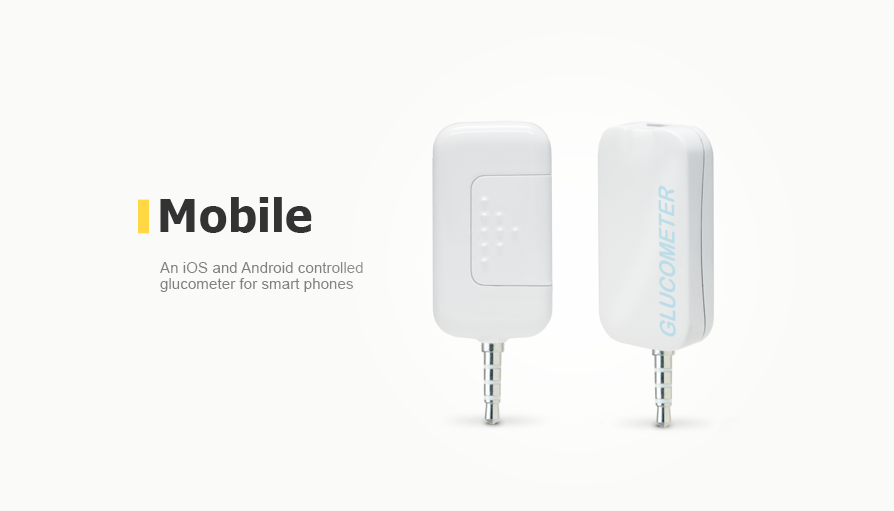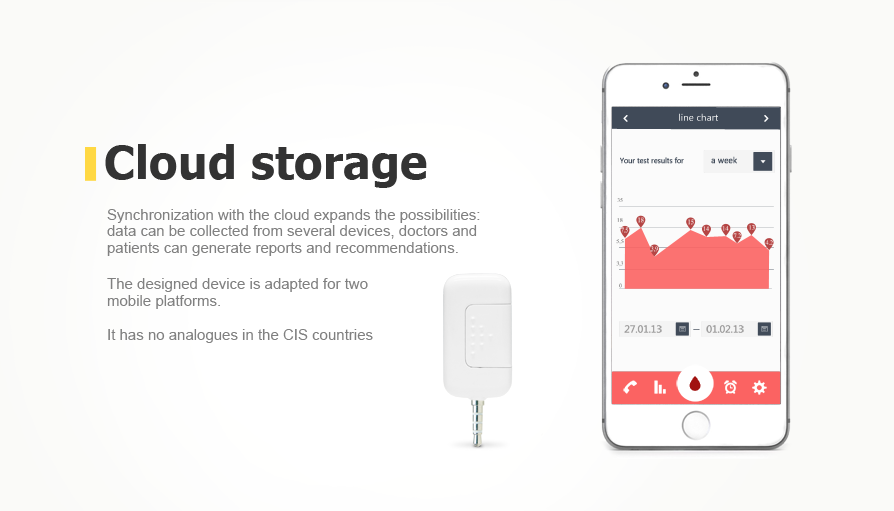Customer
It is a developer and manufacturer of express glucose concentration meters in the blood.
Task
- To develop a portable device, a glucose concentration meter in the blood, in the form of an attaching gadget for iOS and Android based smartphones. The device is connected via the audio jack, and thus the data can be transferred to the smartphone.
- Firmware development for the microcontroller which operates as a part of the device.
- Software development for iOS and Android based smartphones. The results of measurements are transferred to the application, where they are processed and systematized, after that they are sent to a profiled medical center for a remote patient supervision by patient’s doctor.
Solution
1. Hardware
The base hardware platform of the device is a Texas Instruments MSP430G2553IRHB32R microcontroller (MSP430G2 family), it operates at the frequency up to 16 MHZ and allows to implement all necessary functions with the minimum amount of external microchips.
The microcontroller has 512 bytes of RAM and 16 kb of flash memory which is enough to perform the task of communication with the smartphone and reading the code from the code strip.
To conduct measurements, there is a UIC1101 microchip designed by the customer.
In order to connect test strips, a lamellar connector (designed by the customer) located directly on the PCB is used.
Connection with a smartphone is carried out via a 3.5 mm/4 output standard audio jack.
The power supply of the device is implemented by standard CR2032 type batteries.
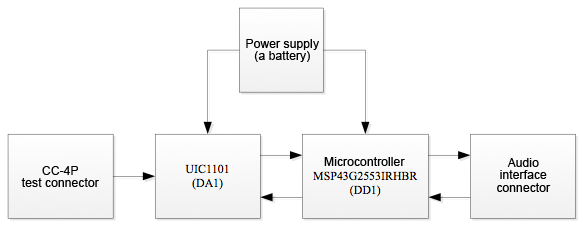
Figure 1. A block diagram of the device.
Technologies used:
- A MSP430G2 family low-energy microcontroller
- A UIC1101custom PCB, that brought together high-frequency analog peripherals: ADC, DAC, a comparator, and a high-precision reference voltage supply
- An audio interface to exchange data with a smartphone, the data transfer protocol is based on Manchester encoding
- Power supply is from an independent power source which supports Android-based smartphones
2. Software
A GPIO interface was implemented for communication between the specialized microchip and the UIC1101 microcontroller. The interface includes two functions: writing a byte to the specified address and reading a byte at the specified address.
The data exchange between the microcontroller and the smartphone is implemented via FM1 encoder and decoder. The software interface includes the functions of bytes reception and transfer.
To debug software code, a debugging information withdrawal to the UART is implemented.
Microcontroller power management is implemented by two modes: Active and Idle. Switching to Idle mode occurs after completing the last transaction (data transfer to a UIC1101 or to a smartphone).
3. Enclosure Design
At the first development stage, we presented to the customer various options of assembly layout of the device. Some of them are shown below:
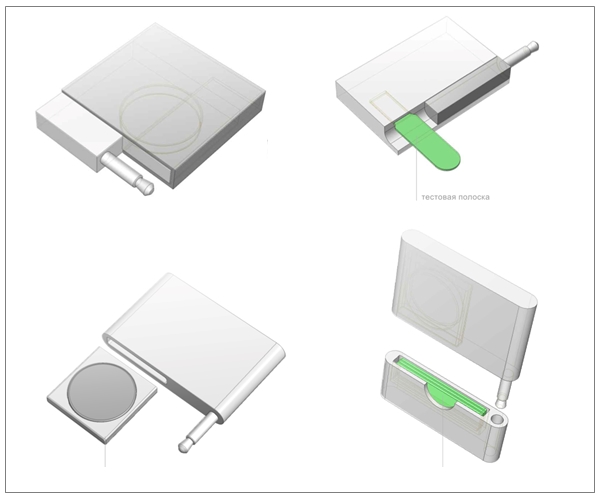
According to the analysis of presented options, the customer made his decision on the layout of the device. A decision was made to make a screw cap of the battery compartment with a coin slot. As a result, the following layout options have been prepared:
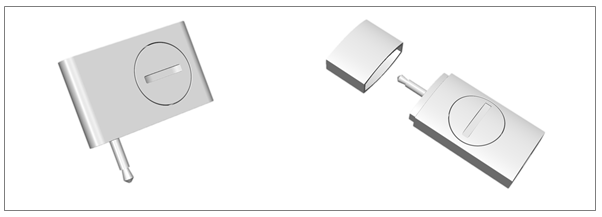
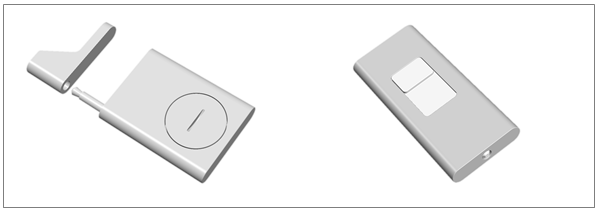
For the options selected by the customer (the 1st and the 2nd) were prepared renderings showing the look of the device when connected to a smartphone:
The horizontal layout which was optimal for the customer could not solve the problem with a variable arrangement of audio jacks on smartphones and the size ratio of other similar devices.
As a result, the finalized design was the following:
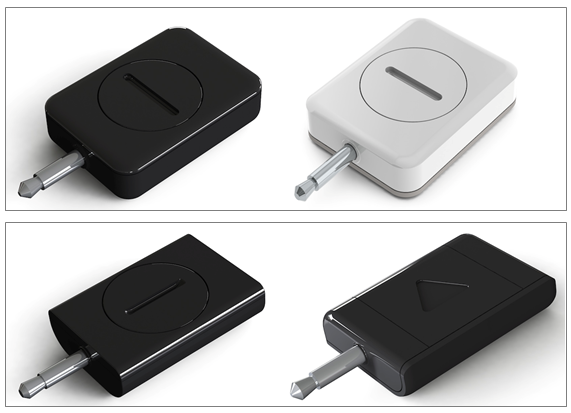
For option one the following prototype was made:
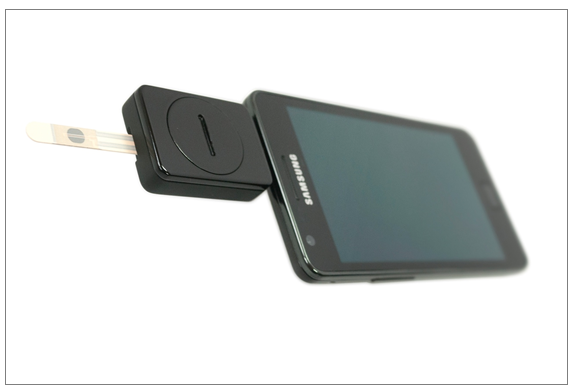
The customer was not satisfied with its actual look and ordered to develop a new version of the design, which would meet modern requirements. Among the proposed sketches the 1st and the 2nd were selected:
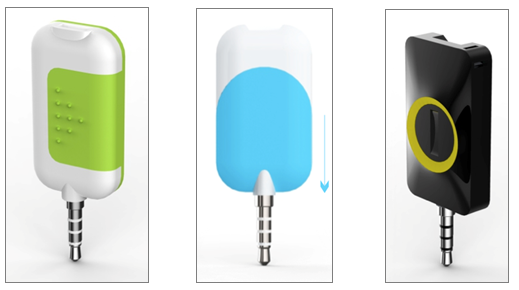
4. The structure of the enclosure
The Promwad engineers were able to implement all necessary functionality inside the enclosure of the small form-factor. In particular, the device is equipped with a 3.5mm audio plug to connect to a smartphone and a connector for test strips.
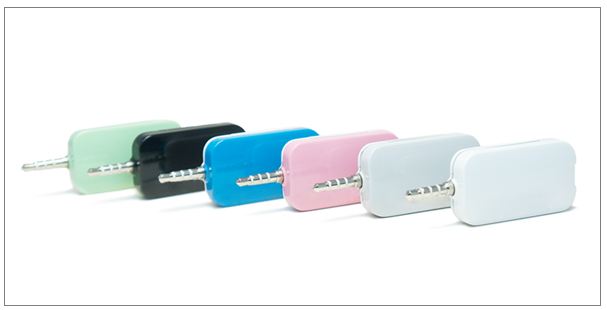
Distinctive features of this solution:
- absence of any controls in the structure of the enclosure
- development of a custom battery holder
- a screw cap with a coin slot for the battery compartment.
5. Mobile application
In the process of application development, one of the main challenges was to implement interaction between the mobile software and the glucometer. That task was solved by analyzing and decoding audio signals allowing various peculiarities of this kind of data exchange implementation in devices with different platforms (iOS and Android) as well as depending on manufacturers and software version.
A convenient informative user interface was designed to work with measurements and test results. The interface guides a user step by step through test stages accompanied by text comments and graphics support.
We continue working on the part of the application which will later become a diabetic patient’s "diary". The application will become a patient’s self-testing tool which is going to support three directions of diabetes therapy: medication, diet control and physical activity.

At the present time, there are not any devices similar to this mobile glucose meter and the application on the Russian-speaking market and in the CIS countries. However, similar devices exist in Europe, America, and Asia. At the same time, such devices are designed for users of Apple smartphones, and they are not intended for a wide audience who use smartphones running on OS Android.
Advantages of the developed device:
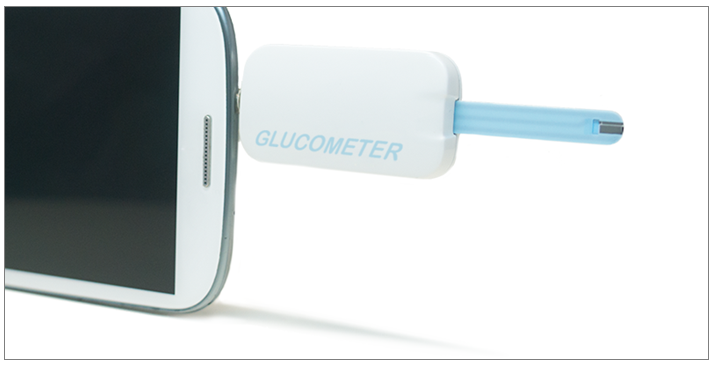
- Absence of similar implementations of portable glucose meters and applications on the CIS countries market
- Implementation for the Android platform
- Multiuser interface
- Emergency communication from the application
- Automatic transfer of test results to preprogrammed specified recipients



